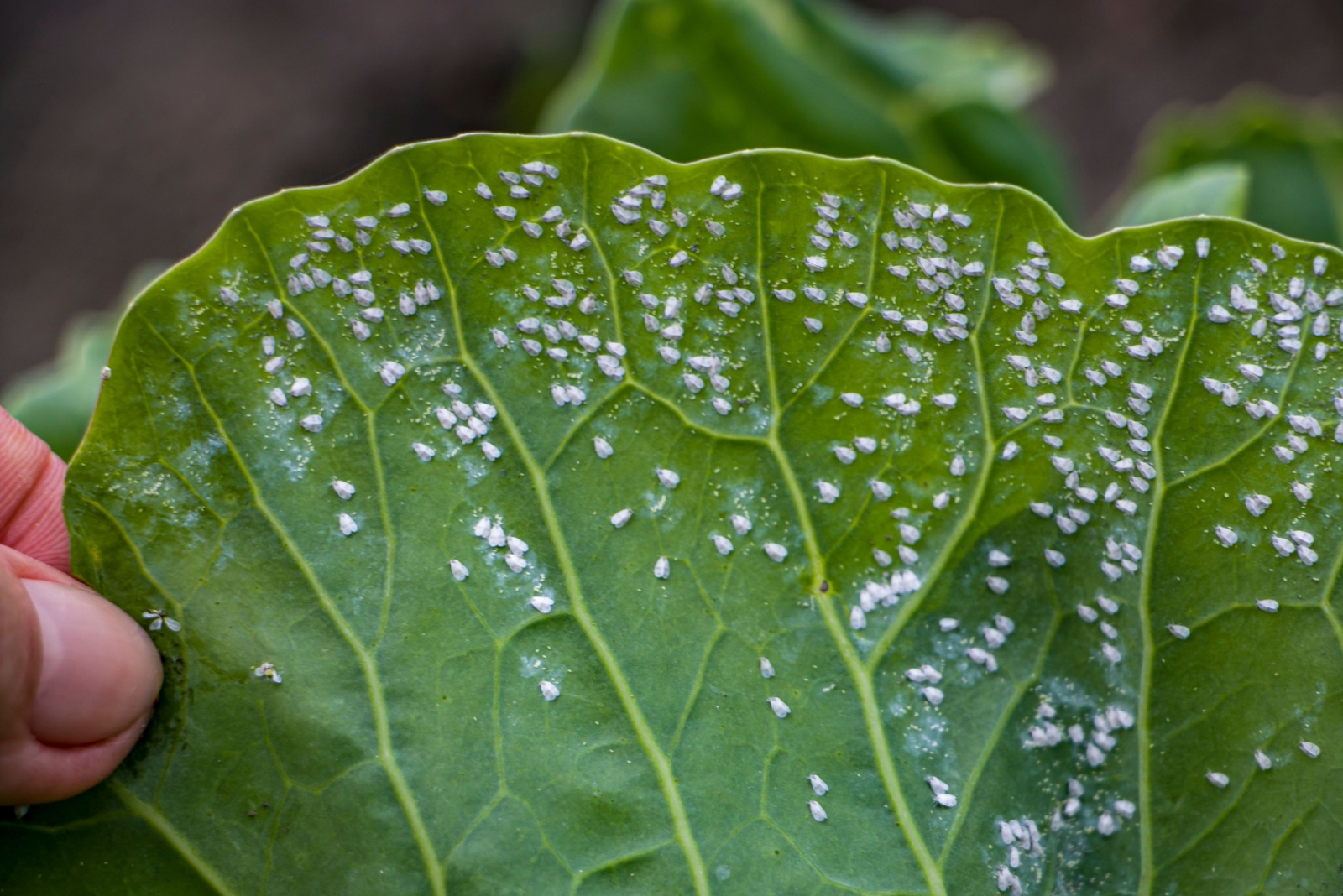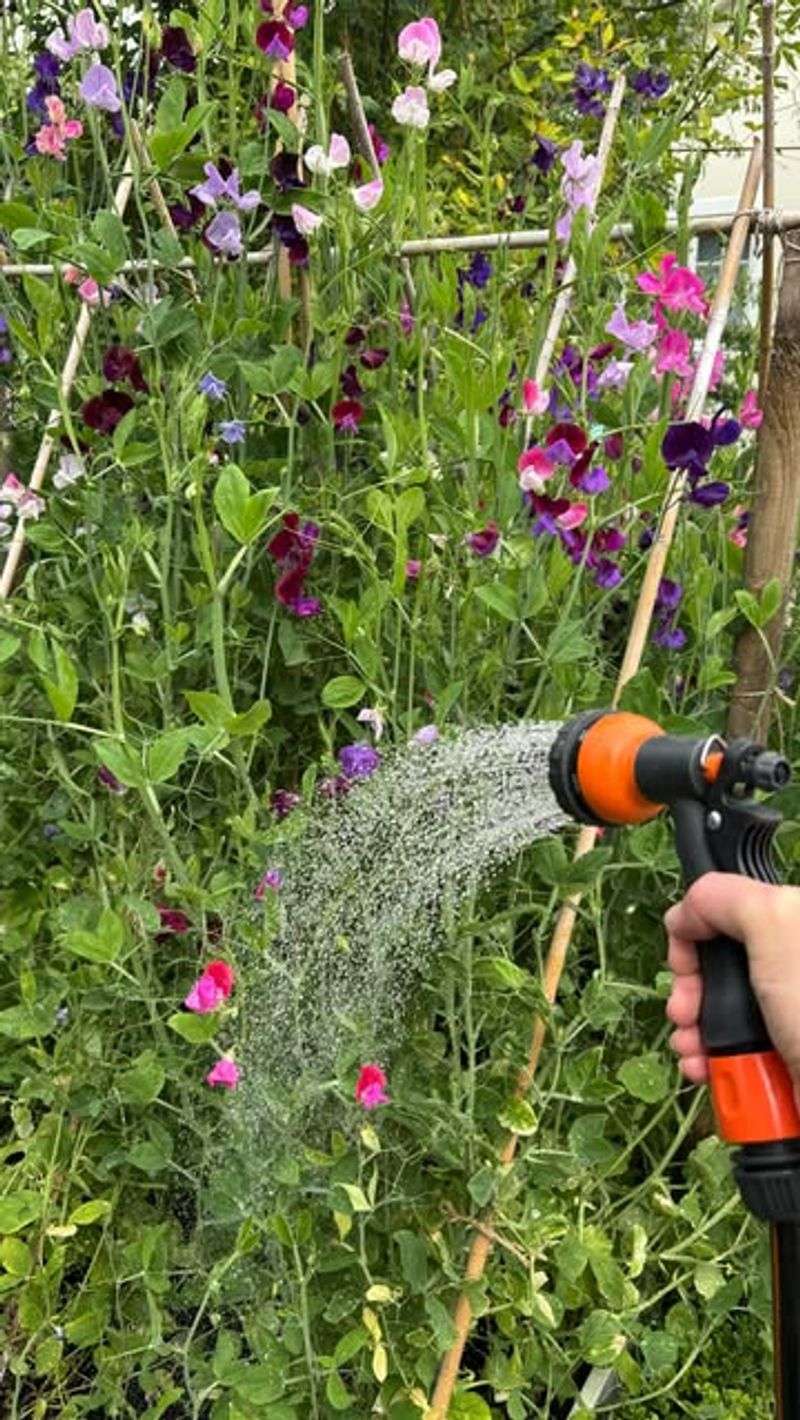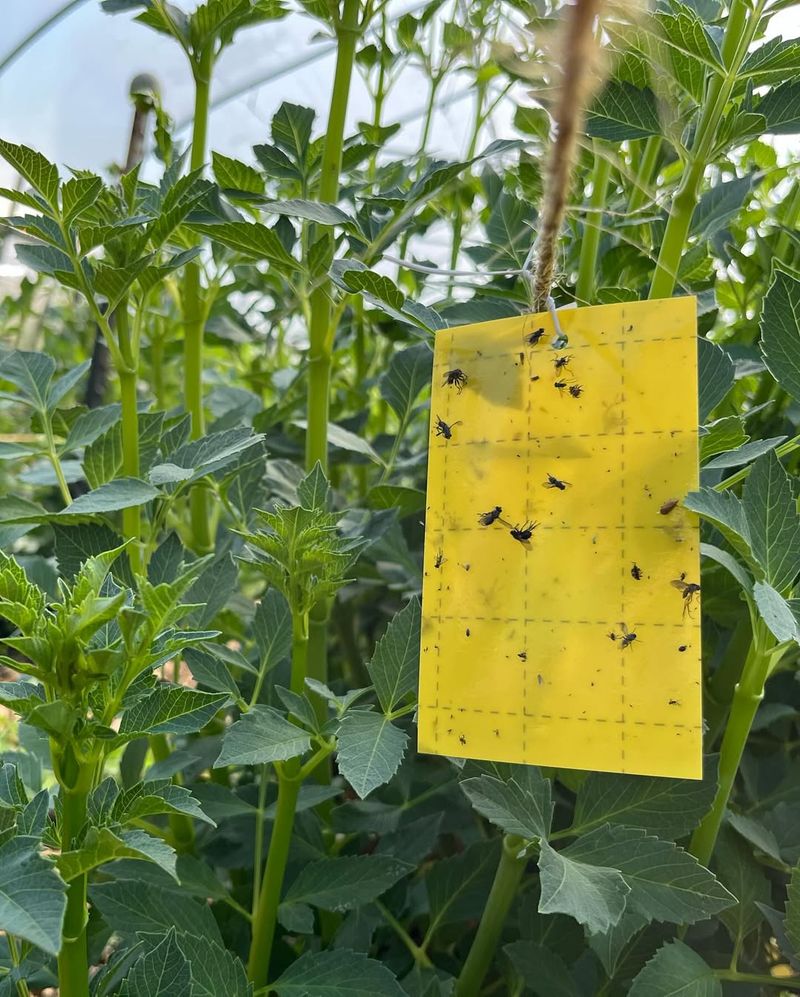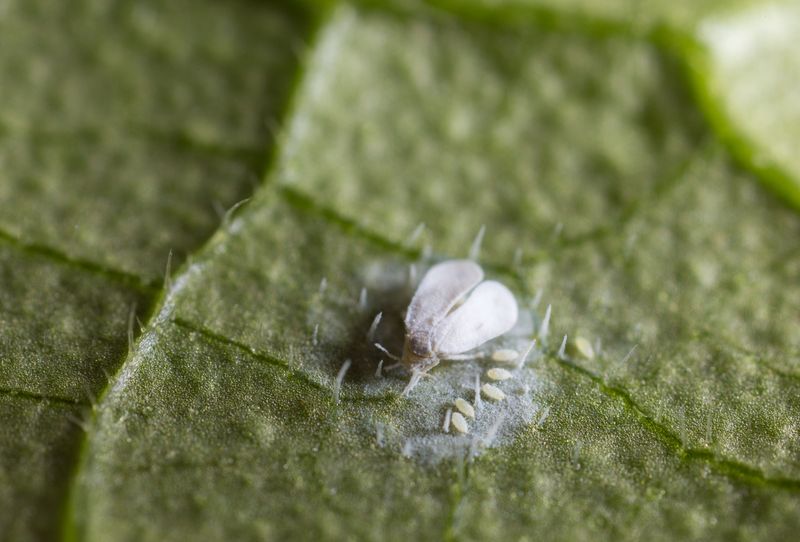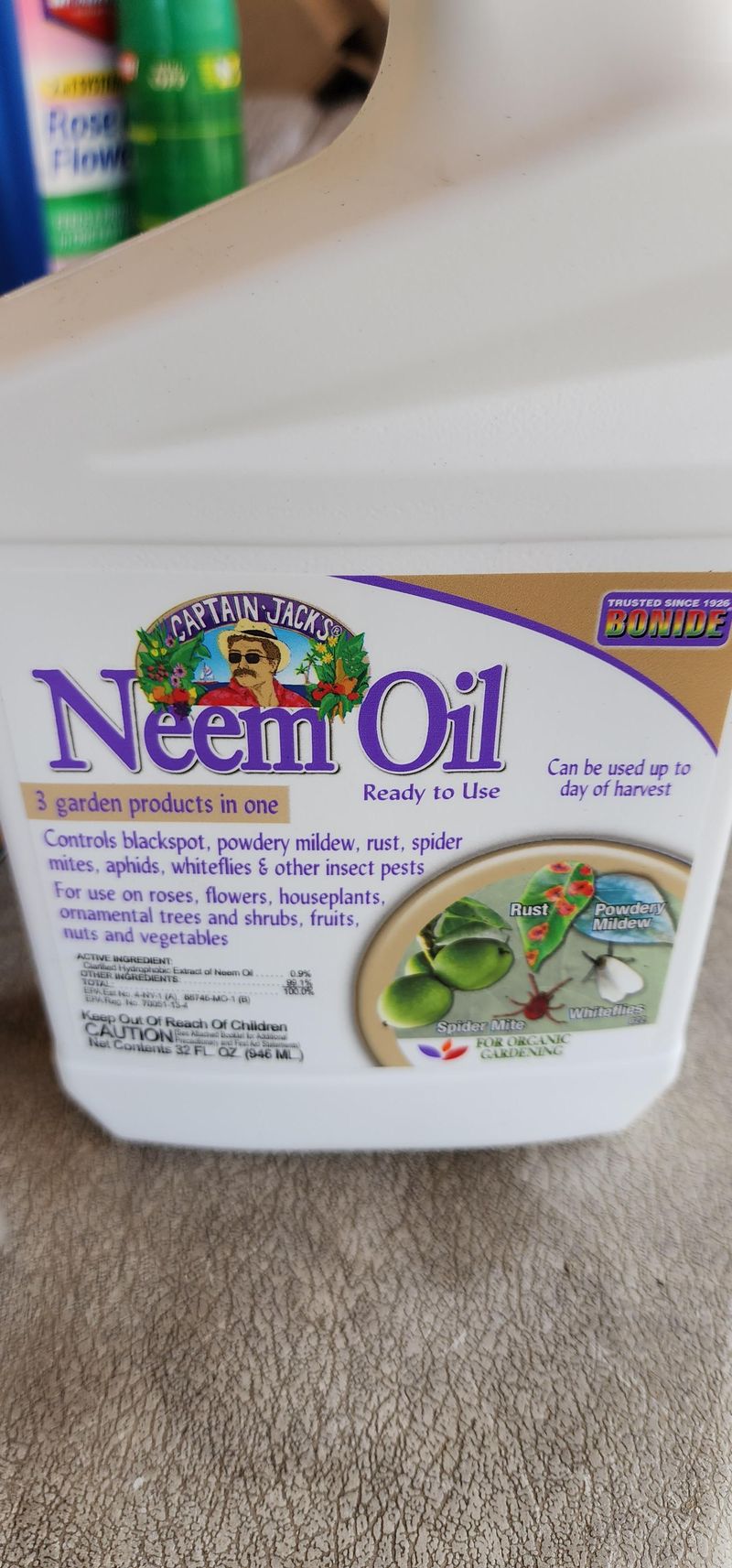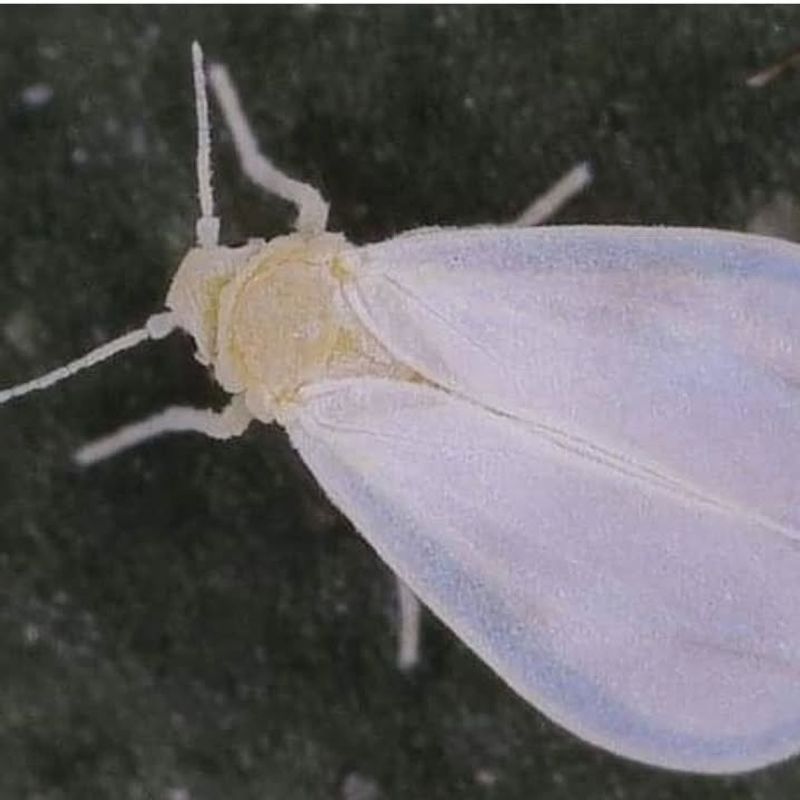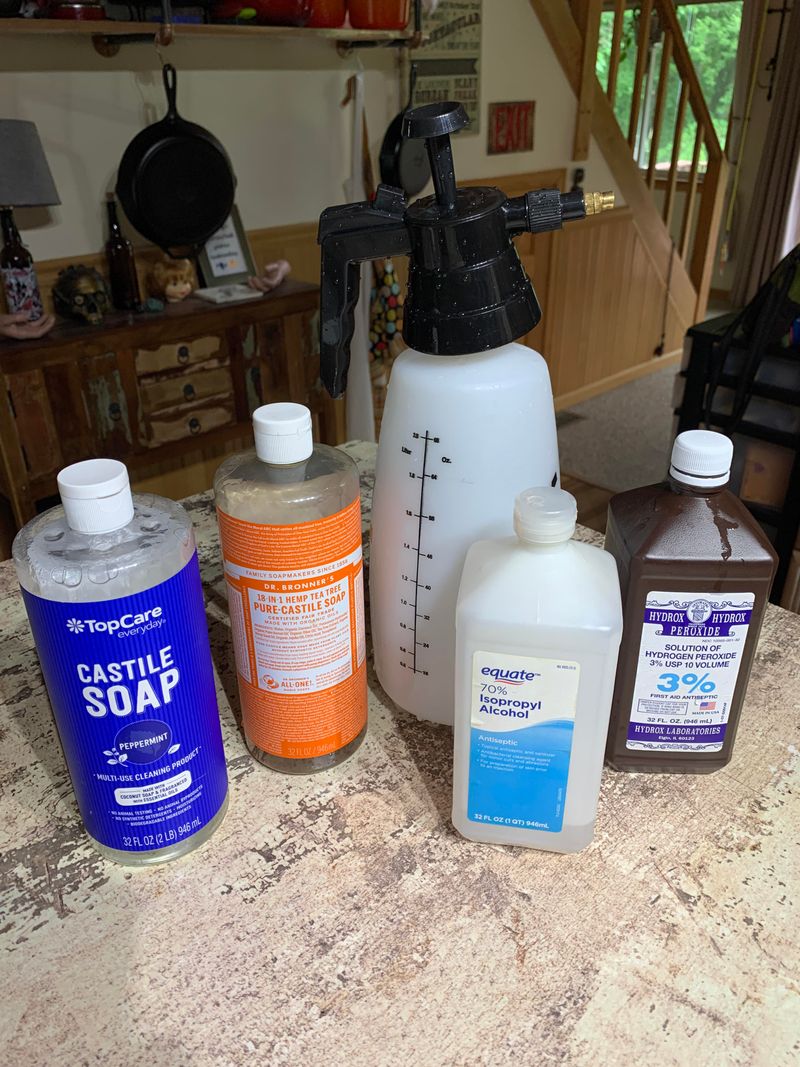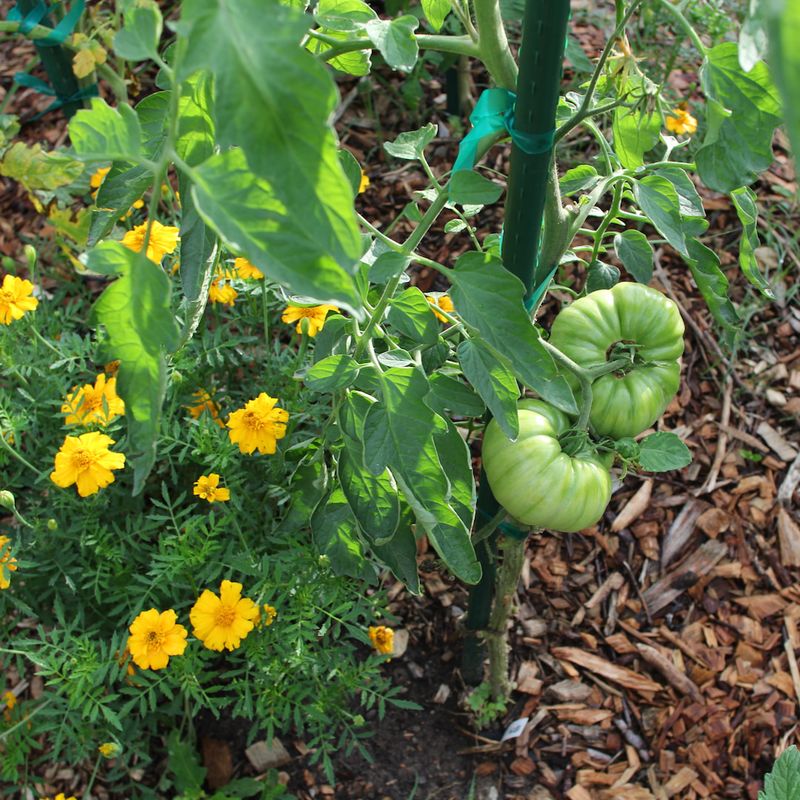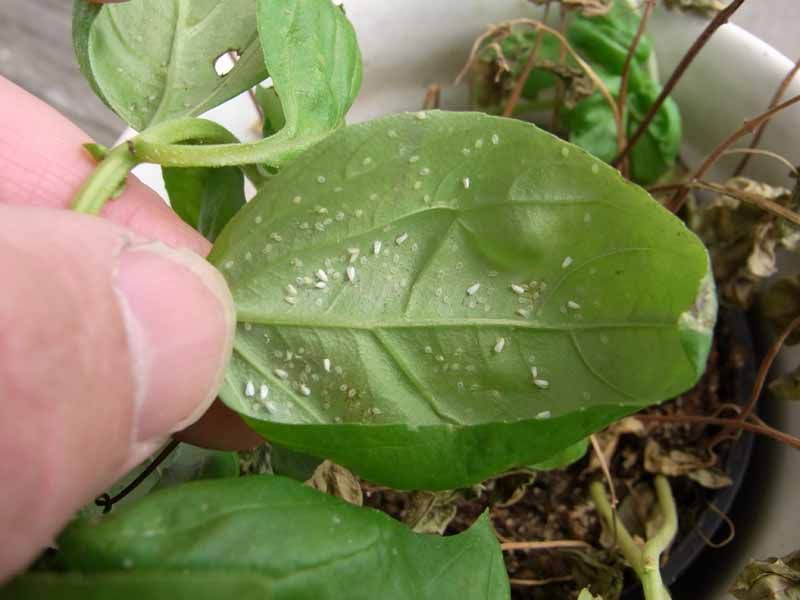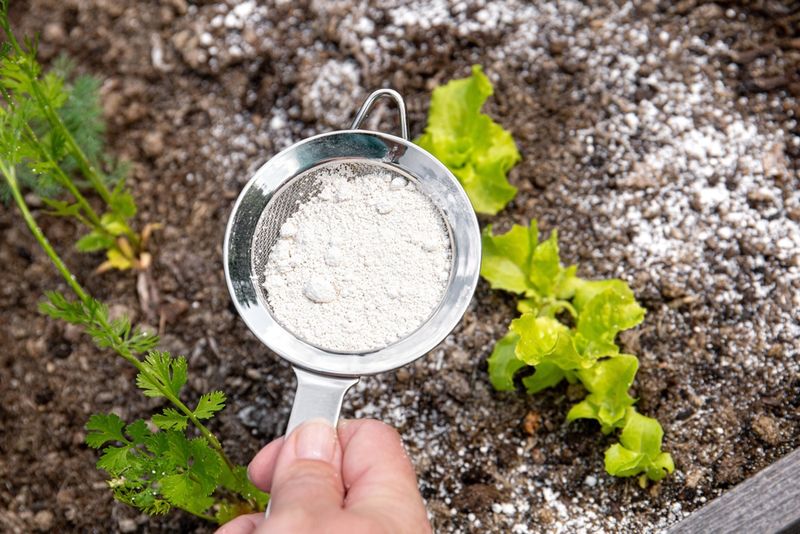Whiteflies are tiny pests that wreak havoc in Texas gardens, especially during our long, hot summers. These sap-sucking insects multiply quickly and can seriously damage tomatoes, hibiscus, and many other beloved Texas plants.
If you’ve noticed yellowing leaves or sticky residue on your garden plants, you might be dealing with a whitefly infestation that needs prompt attention.
1. Blast Them Away With Water
A strong spray of water knocks whiteflies right off your plants. Early morning is the perfect time for this in Texas gardens – I’ve found dawn spraying particularly effective on my lantana when summer heat kicks in.
Simply use your garden hose with a spray nozzle attachment. Target the undersides of leaves where these pests hide. This method works best as a first response when you’re just starting to notice whiteflies gathering on your plants.
2. Sticky Yellow Traps
The bright yellow color attracts these pesky insects like a magnet. Last year during a brutal August heat wave, these traps saved my pepper plants when chemical solutions seemed too harsh.
Place the sticky cards at plant height throughout your garden beds. For best results, position them near but not touching your plants. The cards quickly fill with whiteflies, significantly reducing their population in your Texas garden.
3. Introduce Beneficial Insects
Nature’s own pest control squad can be your best allies. Ladybugs and lacewings happily feast on whiteflies, providing natural balance to your garden ecosystem. Release these helpful insects in the evening when temperatures cool down.
Many Texas nurseries sell these beneficial bugs during spring and summer. After adding lacewings to my citrus trees near Austin, I watched the whitefly population drop dramatically within just two weeks.
4. Neem Oil Applications
This natural extract disrupts the life cycle of whiteflies without harming beneficial insects. During Texas springs, I apply it every 7-10 days on my tomatoes and see fantastic results.
Mix according to package directions and spray thoroughly, especially under leaves. Apply in early morning or evening to prevent leaf burn in our intense Texas sun. The slight garlic-like smell disappears quickly, but the protection lasts for days.
5. Reflective Mulch Barriers
Aluminum foil or reflective mulch creates confusion for whiteflies searching for plants. The reflective surface bounces light upward, disorienting these pests and preventing them from landing.
Lay strips of reflective material between rows of vegetables or around prized plants. My neighbor in San Antonio swears by this method for her zucchini plants. The additional benefit? These reflective surfaces also help cool the soil during our scorching Texas summers.
6. Homemade Insecticidal Soap
A gentle yet effective solution that suffocates whiteflies on contact. Mix 1 tablespoon of pure liquid soap with 1 quart of water in a spray bottle. During my years gardening in the Hill Country, this simple solution saved countless plants.
Spray directly on affected areas, focusing on leaf undersides where whiteflies cluster. For stubborn infestations, apply every 5-7 days until the pests disappear.
7. Strategic Companion Planting
Certain plants naturally repel whiteflies through their strong aromas. Marigolds, nasturtiums, and basil make excellent companions for vulnerable plants in Texas gardens. Interplant these protective species throughout your garden beds.
The fragrant herbs that thrive in our Texas heat do double duty – they repel pests while providing fresh flavors for your kitchen. My Dallas community garden plot stayed whitefly-free all season after surrounding tomatoes with basil borders.
8. Regular Plant Inspection And Pruning
Catching infestations early makes all the difference. Take time each week to examine your plants, especially during humid Texas mornings when pests are less active. Look under leaves and along stems for tiny white insects or eggs.
Remove heavily infested leaves immediately and dispose of them in sealed bags. This simple practice has saved countless plants in my Houston garden, particularly during those muggy summer months when whiteflies seem to appear overnight.
9. Diatomaceous Earth Barrier
This powdery substance creates a lethal barrier for soft-bodied insects. The microscopic sharp edges cut through the whiteflies’ protective coating, causing them to dehydrate. Sprinkle a light dusting around plant bases after watering. Reapply after rain or heavy irrigation.
When my okra started showing whitefly damage last summer near Corpus Christi, this food-grade powder created an effective defensive line without introducing chemicals into my organic garden.

